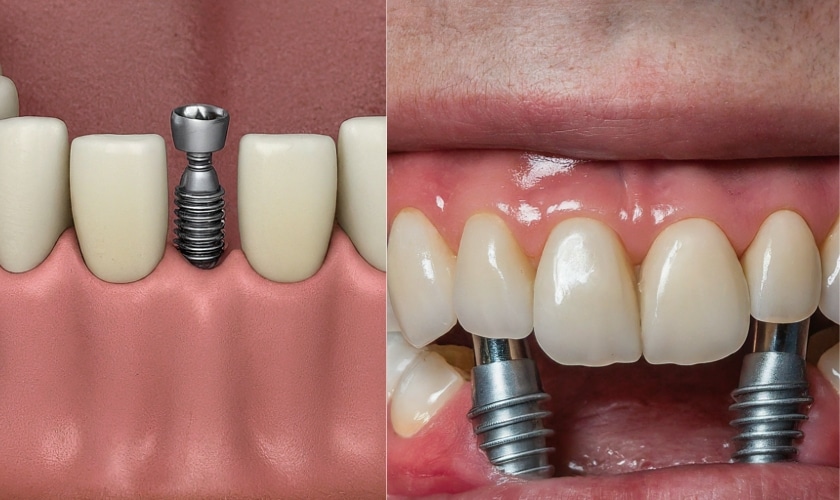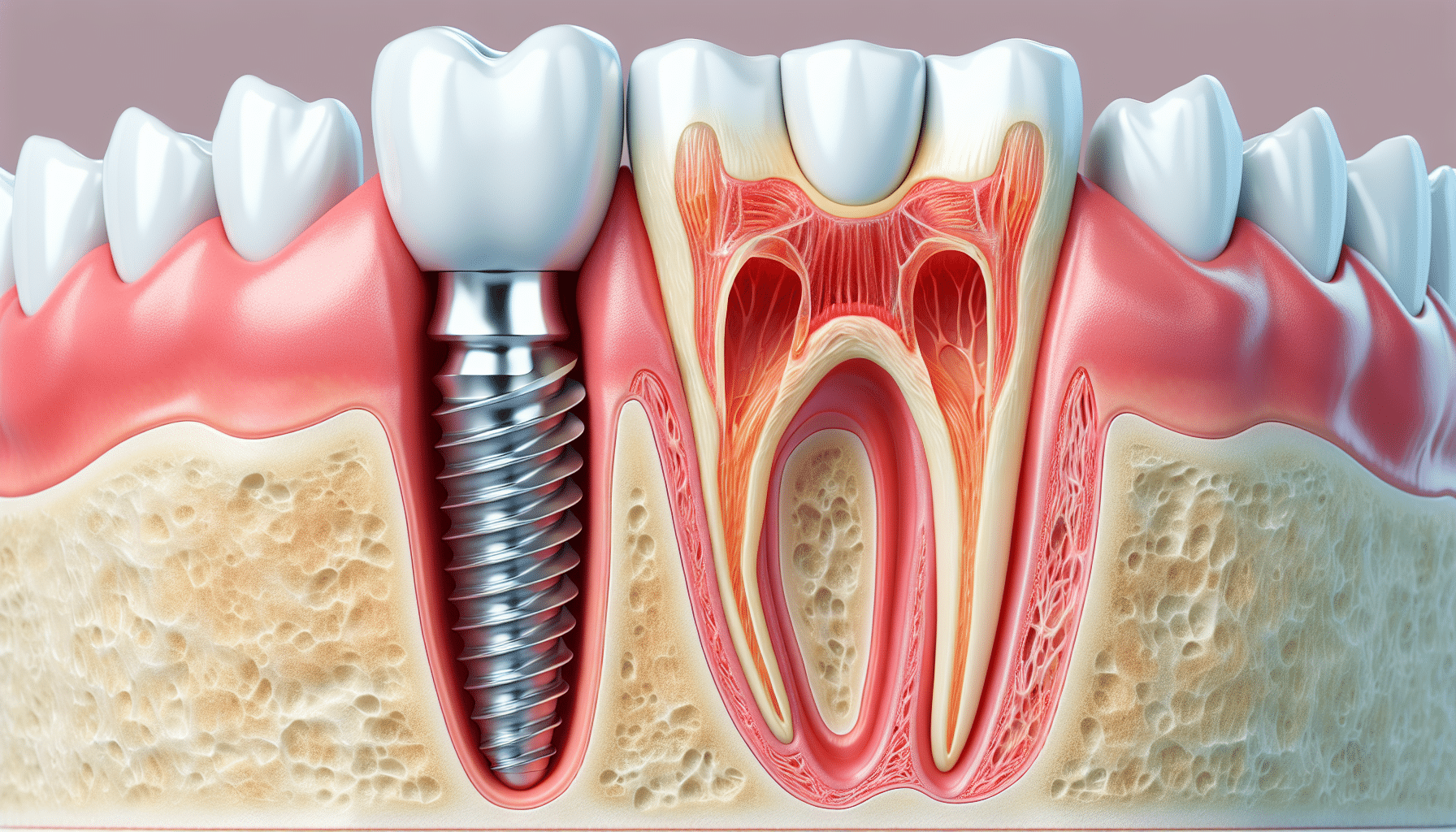The Ultimate Guide To Dental Sense
The Ultimate Guide To Dental Sense
Blog Article
What Does Dental Sense Do?
Table of ContentsThe Main Principles Of Dental Sense The Buzz on Dental SenseA Biased View of Dental SenseThe Greatest Guide To Dental Sense
are medical tools operatively implanted right into the jaw to restore an individual's capacity to eat or their look. They provide support for synthetic (fake) teeth, such as crowns, bridges, or dentures. When a tooth is lost because of injury or illness, a person can experience complications such as fast bone loss, defective speech, or modifications to eating patterns that cause discomfort.Dental implant systems include a dental implant body and oral implant joint and may also include a joint fixation screw. Dental implants. The dental implant body is surgically put in the jawbone in location of the tooth's origin. The oral implant abutment is normally affixed to the implant body by the abutment fixation screw and extends through gum tissues right into the mouth to support the connected synthetic teeth
(https://sitereport.netcraft.com/?url=https://nearme.vip)Structure of The Oral Implant System selecting dental implants, speak with your oral company about the potential benefits and risks, and whether you are a prospect for the treatment. Points to consider: Your total health and wellness is an essential factor in identifying whether you are a good candidate for dental implants, how long it will certainly require to heal, and how much time the dental implant may stay in place.
Smoking cigarettes may affect the recovery procedure and reduce the lasting success of the implant. The recovery process for the dental implant body may take several months or longer, during which time you generally have a temporary joint instead of the tooth. the dental implant procedure: Very carefully comply with the dental health directions provided to you by your dental company.
Everything about Dental Sense
Implant failure can lead to the need for one more procedure to fix or replace the dental implant system. Recovers the ability to chew Recovers aesthetic appearance Aids keep the jawbone from shrinking because of bone loss Preserves the wellness of the bordering bone and gum tissues Aids maintain adjacent (neighboring) teeth secure Enhances lifestyle Damages to bordering all-natural teeth during dental implant placement Injury to the surrounding tissues throughout surgical treatment, such as sinus opening Injury during surgery (for instance, fracture of surrounding jawbone) Insufficient feature, such as feeling like the teeth do not attack together typically An experience that the tooth hangs or turning in place arising from an abutment screw loosening up Implant body failure (looseness of the implant body) because of systemic infection, which may be most likely in clients with unchecked diabetics issues as a result of local infection in bone and gum tissues sustaining the implant body because of postponed recovery, which might be most likely in people who smoke Difficulty cleaning the periodontals around the implant, resulting in inadequate oral health Without treatment periodontal illness Post-surgical numbness as a result of nerve impingement or damage Always notify wellness care providers and imaging specialists that you have dental implants prior to any magnetic resonance imaging (MRI) or x-ray procedures.
FDA is not aware of any damaging occasions reported for MRI or x-ray treatments with oral implants. Oral implants systems are normally constructed from products that adhere to global consensus criteria of the International Company for Standardization (ISO) or ASTM International. These standards have details of what makes a safe material.

An oral implant is a structure that changes a missing tooth. With screw-like tools, the surgeon inserts a dental implant into the jawbone, and it acts as a support for a man-made tooth, called a crown.
The Main Principles Of Dental Sense
Some people are not eligible for oral implant surgical procedure. It is for dental specialists to operate people with: acute illnessuncontrollable metabolic diseasebone or soft tissue illness or infectionIf these problems are dealt with, a person can have the surgery. In, dental specialists refrain from operating on people with: If people with any of the above undertake dental implant surgery, there is a higher threat of the dental implant failing.

Oral dental implant surgical treatment is a tailored procedure. Provide you time to heal. Affix the post and last crown, bridge or denture.
Next off, your surgeon will thoroughly put the dental implant right into your jaw. Finally, your cosmetic surgeon will certainly reposition your gum tissues and shut the incision with stitches. If your dental implant is near the front of your mouth, your dentist will read this article certainly make a short-lived tooth for you to put on up until you recover. This way, you won't have a void in your smile while you recuperate.
Our Dental Sense Ideas
Your service provider can inform you what to anticipate in your situation. Throughout the healing stage, your jawbone must fuse to the dental implant. This process, called osseointegration, is critical for stability and long-term success. This process can take anywhere from 3 to nine months. In some instances, it might take much longer.
When your dental implant heals, your dental practitioner can attach the joint (little port message) and your final remediation (crown, bridge or denture). This normally takes regarding one hour to finish and may require a 2nd minor surgery. You should not feel any kind of pain throughout your dental implant procedure because your service provider will make use of medicine to numb your gum tissues.
Report this page